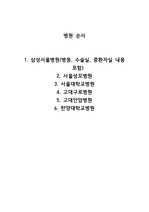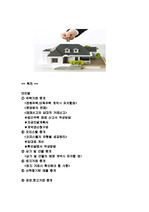HIGHLY STRETCHABLE PLEATS MAKER USING THE KINECT SENSOR AND ARDUINO FOR WEARABLE SHAPE-CHANGING -UTILIZED BY SHOP WINDOW DISPLAY-
* 본 문서는 배포용으로 복사 및 편집이 불가합니다.
서지정보
ㆍ발행기관 : 글로벌지식마케팅경영학회(GFMC)
ㆍ수록지정보 : GFMC Session1
ㆍ저자명 : Eun-A Lee, Jong-Jun Kim
ㆍ저자명 : Eun-A Lee, Jong-Jun Kim
영어 초록
Global interest in smart-wear has risen rapidly in the 21stcentury. “Smart-wear” is one application of intelligent textiles and refers to all clothes made with intelligent textiles (or those that are a convergence). New developments represent a positive opportunity for the fashion industry to integrate new technologies to evolve. Smart-wear also includes wearable computers or digital clothing defined as “garment-integrated devices which augment the functionality of clothing, or which impart information-processing functionality to a garment”. The garment is an ideal interface medium between humans and electronic products due to interaction and technologies in the fashion industry. Smart-wear represents the future of both the textile/clothing industry and electronic industry.Smart-wear for transformable garments allow the conversion of aesthetics and functionality into multiple looks and functions that satisfy various user needs and wants. Smart-wear offers a potential paradigm shift.
Precedent studies have focused on the role of transformation to understand the relationship and interaction between humans and new digital technologies (Petersen, Iversen, Krogh, & Ludvigsen, 2004).
Hussein Chalayan created aa transformer dress that can twitch and reconfigure. The long Victorian dress hemline contracts into a flapper style dress. Berzowska created dresses that use shape memory alloys to move and change in continuous motions (Ariyatum & Holland, 2003).Perocich used a pneumatic approach to lift garments and change the appearance of clothes (von Radziewsky, Krüger, & Löchtefeld, 2015).Lee & Kim(2014) built a shape-changing dress which apply fabric properties and illuminance sensor to fold pleats.
The idea of changing the overall appearance of clothes seems promising. Contemporary smart-wear has various functions that include sensing, actuating, powering, generating, storing, communicating, data processing and connecting. Technologies to develop digital applications can be easily controlled by smart-wear using an Arduino (Na & Cho, 2009).
An embedded system for using Arduino can be worn like clothing or an accessory that is a favorable for shop window display.
Shop window displays of fashion products have cultural consumption and fashioned identities that have developed into forms of art themselves and produce interesting imagery within fashion culture.
In recent decades store window displays have become a unique form of advertising and are the first point of contact between the shop and the shopper (Crewe, 2015).
The shop window display design might not instantly attract attention until the shopper realizes its interactive aspects. Such an interaction visually reveals a relationship between the store window and shopper's reaction.
In order to connect these shop window displays with an interactive fashion design, this paper aims to illustrate how these concepts fit into the prototype.
This paper develops a prototype of Wearable Shape-Changing (WSC) that deforms the fabric for pleat making on clothing for a store window dummy. Data processing is created by the motion of a shopper for the input functionality to discriminate between different shopper motions using the Microsoft Kinect sensor. A concealed Kinetic system scans every part of shopper’s joint for skeleton extraction when the shopper is outside the shop window. It is able to detect the shopper’s simple motion and simultaneously deliver information to the Arduino in the system. The prospective fashion display system needs to be devised based on a more serious technical method that utilizes information on the physical properties of fabrics to facilitate development in the store window. There has been some discussion on how fabrics could create foldable clothing items; in addition, a range folding techniques has been extended to e-textile due to useful characteristics (Perovich, Mothersill, & Farah, 2014).
The experiments performed in this paper allows observers to examine basic fabric characteristics and physical properties. The behavior changes during fold deformation and the recovery process as well as identifies correlations between stiffness and recovery rate.
As an experimental sample, this paper selects 2 types of fabric that have relatively stiff characteristics of a organza (one is 100% silk and the other is 100% polyester). The pleats type selects a diamond-pattern and the pleats finishing process employs a heat-setting method commonly used in the fashion industry.
The results were as follows: The Silk organza has 66 weight(g/㎡) and 0.17 nominal thickness (㎜) and the Polyester organza has 39.6 weight(g/㎡) and 0.11 nominal thickness (㎜). Both silk and polyester samples have the large stiffness value in the weft direction. Tensile properties resulted in similar values in both the warp and in the weft directions. Polyester has a great thermothermos plasticity, unique resilience, providing good pleats retention and crease recovery while silk has a low wrinkle recovery. However, silk has identical recovery rate in first and second elongation deformations for diamond-pattern pleats. The diamond-pattern also has a significant correlation with the warp and bias directions. Thus, folding composition should consider the directions of the fabric according to folding technique. Based on the experiment’s results among fabric samples’ physical properties of silk were chosen for the prototype.
In the prototype, the shop window displaying dummy wears a long dress, but it is designed to become shorter when the shopper lifts the arm. The mechanism by the operating design pulls the hemline in the front up to the lower thigh when the kinetic sensor detects motion.
As a means of visual communications or expression of the shopper’s mood, illuminance may be attached according to the shopper’s discretion. The advantage of the WSC dress compared to a traditional static dress is that the transforming shape occurs immediately by means of interaction.
Future studies, different approaches were proposed to clothing both hand and finger movements in a mobile environment. This paper focuses on a set of alliances between technology and fashion/textiles, with the WSC designed as an interface to be used for both purposes. This study represents a bridge between fashionable technologies and informative material properties. It represents a small first step from static dynamic fashion to dynamic interactive fashion.
참고 자료
없음"GFMC Session1"의 다른 논문
 FAST AND SLOW FASHION BRANDS IN DEVELOPING SUSTAINABLE ..6페이지
FAST AND SLOW FASHION BRANDS IN DEVELOPING SUSTAINABLE ..6페이지 “WHAT IF A CELEBRITY AND A BRAND CO-CREATE A NEW COLLEC..7페이지
“WHAT IF A CELEBRITY AND A BRAND CO-CREATE A NEW COLLEC..7페이지 THE INSTAGRAM’S STRATEGY IN ENGAGING THE CUSTOMER’S LOY..3페이지
THE INSTAGRAM’S STRATEGY IN ENGAGING THE CUSTOMER’S LOY..3페이지 THE PARTICULARITIES OF NEW PRODUCT DEVELOPMENT IN THE T..5페이지
THE PARTICULARITIES OF NEW PRODUCT DEVELOPMENT IN THE T..5페이지 THE LONE CHOCOLATE BAR: THE INFLUENCE OF PERCEIVED SCAR..6페이지
THE LONE CHOCOLATE BAR: THE INFLUENCE OF PERCEIVED SCAR..6페이지 ADS AS WORKS OF ART: MEASURING ADVERTISING IMMERSION3페이지
ADS AS WORKS OF ART: MEASURING ADVERTISING IMMERSION3페이지 ECONOMIES OF SMALL: NICHE STRATEGIES AND SUCCESS FACTOR..8페이지
ECONOMIES OF SMALL: NICHE STRATEGIES AND SUCCESS FACTOR..8페이지 THE INFLUENCE OF ONLINE CUSTOMER REVIEWS ON RETAILERS' ..6페이지
THE INFLUENCE OF ONLINE CUSTOMER REVIEWS ON RETAILERS' ..6페이지 IS THE ARTIFICATION PROCESS PERCEIVED BY FINAL CONSUMER..6페이지
IS THE ARTIFICATION PROCESS PERCEIVED BY FINAL CONSUMER..6페이지 THE ODD EVEN PRICE PARADOX IN THE FASHION LUXURY SECTOR6페이지
THE ODD EVEN PRICE PARADOX IN THE FASHION LUXURY SECTOR6페이지

























